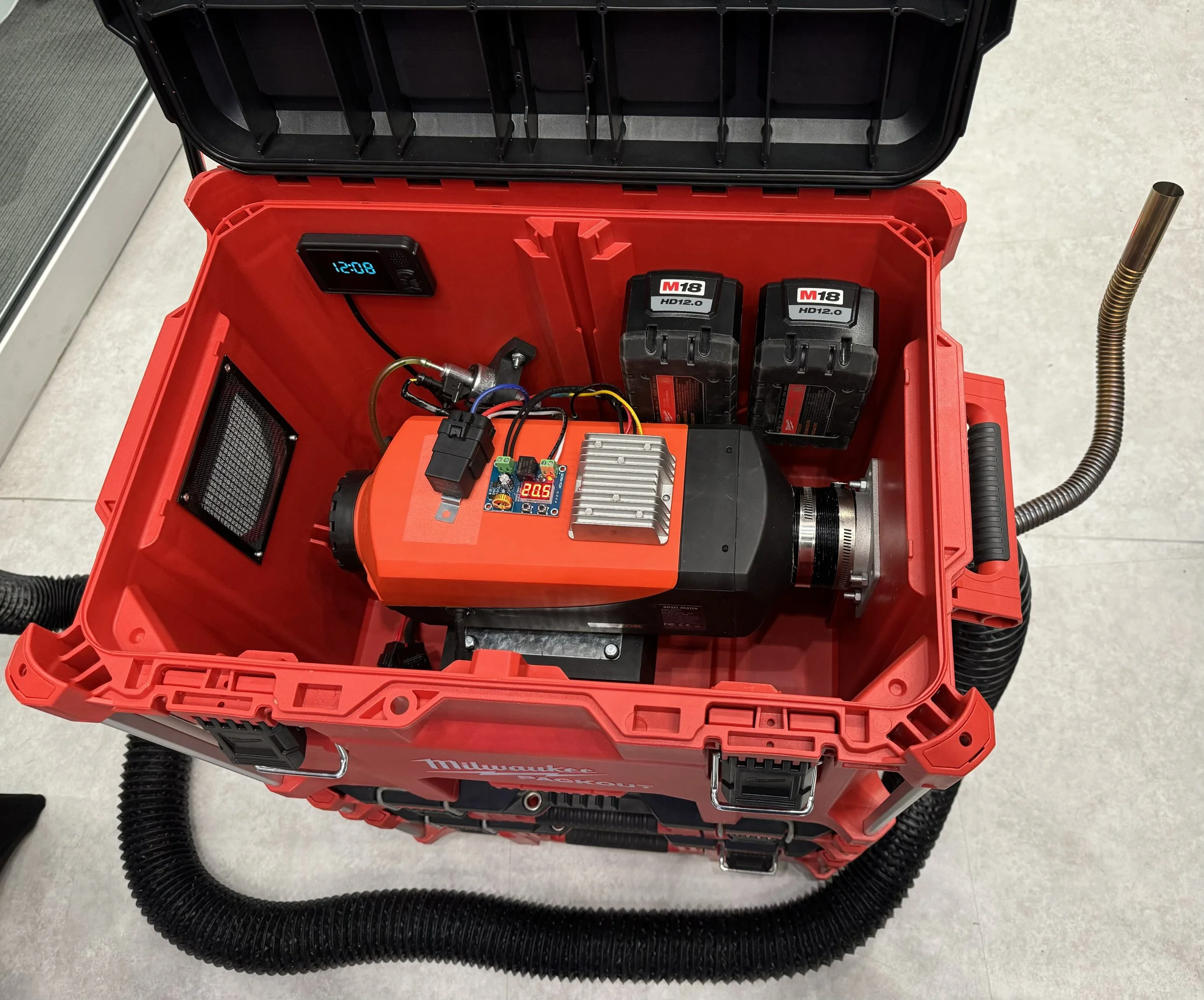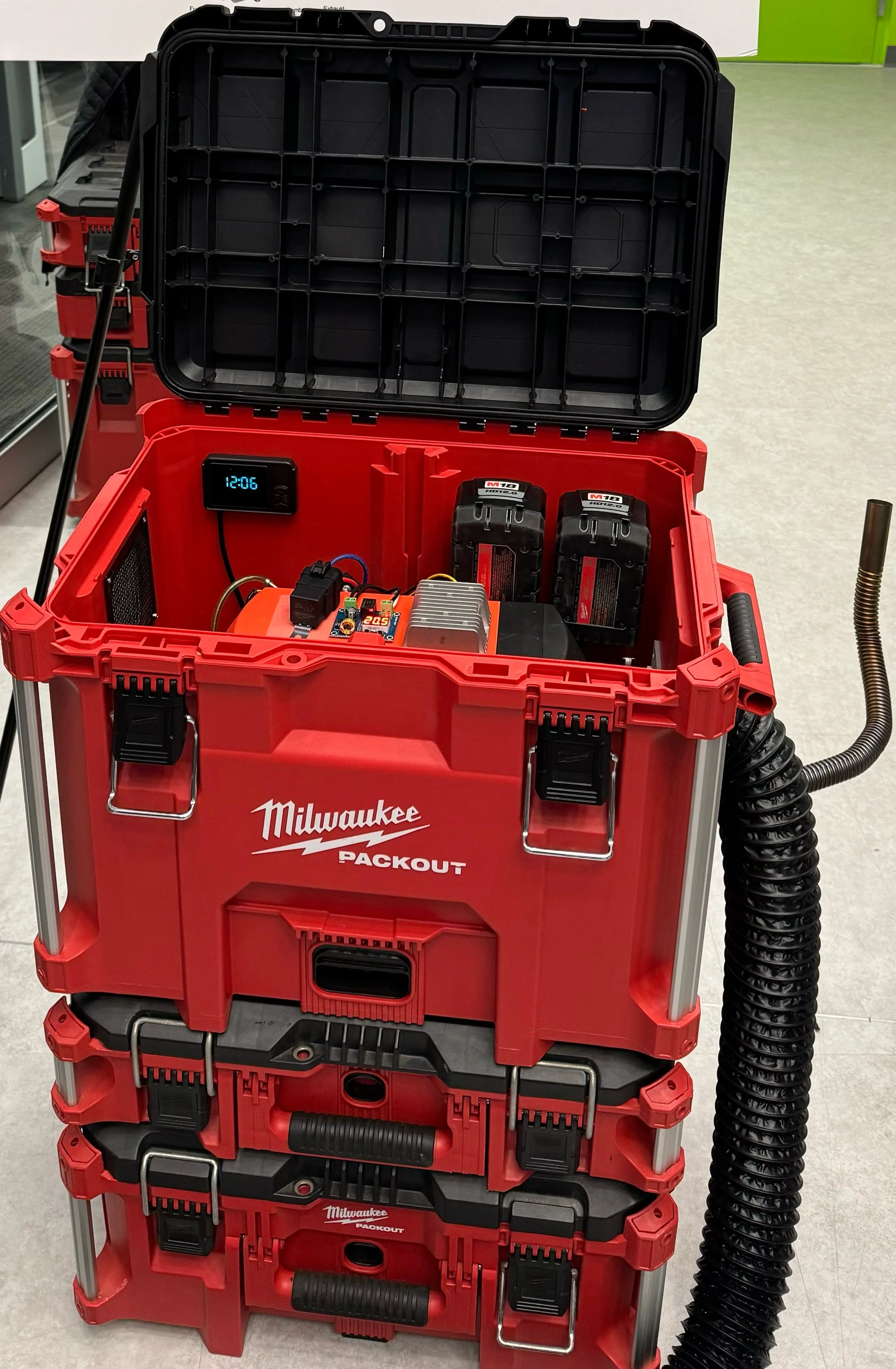Final Product
Fabrication
Overall, the fabrication process went very smoothly. Cutting the Packout case went flawlessly and all systems seem to work as designed. I ended up testing the diesel heater several times this winter to heat my garage and my ice fishing tent and it worked great! I want to look more into cutting diesel with kerosene simply to lower the temperature that the fuel freezes at, however, simply using anti-gel in the diesel fuel has allowed it to stay in a liquid state even at sub 10 degrees.
An acute eye will see that I was forced to install a mesh screen on the left side of the Packout case. This was due to the fact that the diesel heater core required much more air than anticipated and the O-ring material on the top of the Packout worked too well sealing the inside of the case. This inherently made the diesel heater not waterproof, however, I am still in the process of designing a downward facing duct to put over the mesh in order to ensure there is no water or snow ingress (unless completely submerged). For this reason, the diesel heater is sadly only water resistant. At the time it was a major disappointment, however, after using it in the pouring rain and in several feet of snow, the heater performed flawlessly and there was essentially no water ingress.
3D Modeling
3D modeling took about half of all the time I spent on this project. It was purely due to the number of parts I designed and the tolerancing needed for a tight, but not too tight of a fit. 3D printing threads is somewhat tricky and changing materials (PLA to ASA) changes those tolerances again. Shown to the right is a video of all the different parts being printed with an ABS print fail as well. When printing engineering materials (structural materials like ABS, ASA, PETG…) the temperature of the enclosure matters a great deal more when compared to materials like PLA. These “engineering materials” are tougher to print with but provide significantly better material properties (water ingress, elasticity, impact strength…). For this reason, I tested several prototypes with cheaper, easier to print material (PLA). Once I was satisfied with the fit and overall finish of the prototypes, I reprinted the parts in ASA for a stronger, more whether resistant material.

